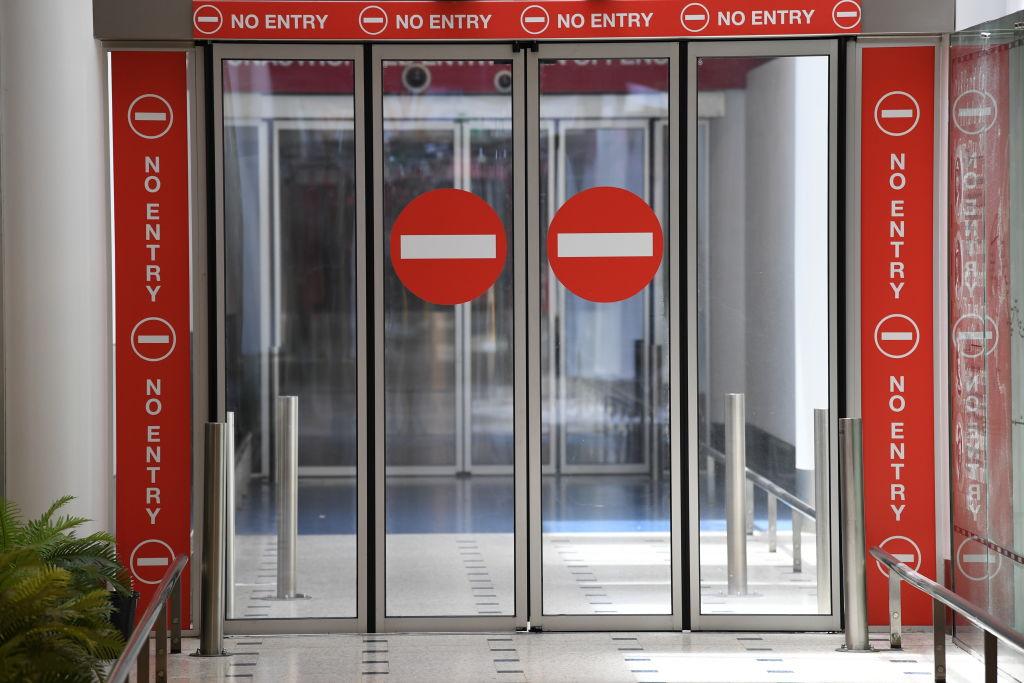Securing Australia from the perpetrators of atrocities
Posted By James Baylis on May 20, 2022 @ 06:00

The war in Ukraine is exposing Australians to alleged atrocity crimes [1] in near real-time. With this heightened awareness, there’s a timely opportunity to review Australia’s security posture towards threats posed by the people behind those crimes.
Atrocity crimes—also known as core international crimes—is the collective term used to describe war crimes, crimes against humanity, genocide and, increasingly, ethnic cleansing. United Nations affiliates [2] are monitoring at least 12 countries where atrocity crimes are ongoing, and another six where such crimes are at high risk of occurring. Closer to home, the University of Queensland’s Asia-Pacific Centre for the Responsibility to Protect [3] lists five locations where atrocity crimes are ongoing or at high risk of occurring in our region.
Successive Australian governments have struggled to sustain an effective threat management capability for perpetrators of atrocity crimes. This is partly driven by a poor understanding of the threat landscape resulting in poorly set objectives and inappropriate risk treatments. To help rectify this and support a new line of policy debate, I apply a border-security lens to explain the threat posed by perpetrators and offer a model for enhanced collaboration across the national security community.
Here’s the rub: perpetrators are a persistent threat, operating across the border continuum. They exploit diplomatic, migration, citizenship, trade and customs pathways. Their intents are diverse, but they exact social, economic and reputational costs for Australia.
What does it look like when these threats manifest? Unfortunately for us, examples abound. In 2022, 2GB examined [4] a recent report from the Australian Federal Police claiming that 70 people from the Balkans in Australia are wanted for war crimes. These perpetrators illegally circumvented the character test for migration that prohibits war criminals from entering the country and seeking citizenship.
Once onshore, perpetrators use Australia as a safe haven from prosecution, compromising our ability to meet international obligations under the Rome Statute—as was the case in 2007, when it was discovered that a large cohort of war criminals from the former Yugoslavia had found safe haven [5] here.
This creates a dilemma for the government, which may be pressured to hold perpetrators to account, or otherwise manage scandalous injustice [6]. In 2011, for example, an Australian citizen tried to press charges against a visiting Commonwealth head of state [7] for crimes committed in Sri Lanka.
Perhaps worse still, these criminals threaten social cohesion by engaging with victims of crimes and the broader community. This has consequences at both an individual [8] and community level, as we saw in 2020 when hundreds of Australian Armenians [9] travelled to Canberra calling on the government to speak out against war crimes perpetrated in the Nagorno-Karabakh conflict.
Beyond the trauma perpetrators cause, they often create transnational networks of criminal activity. In 2018, a South Sudanese general [10] was found living in Melbourne having fraudulently claimed nearly half a million dollars in welfare payments. And in 2019, a Liberian war criminal [11] exploited the migration program numerous times to enter Australia with millions of dollars.
This criminal activity can go beyond migration and financial crime. Perpetrators may circumvent customs controls to import and export both illicit goods and licit goods used for illicit purposes—such as the perpetration of further atrocity crimes.
Finally, Australian organisations may be perceived as enabling or ignoring the perpetration of crimes. As ASPI reported [12] in 2020, one factory that received Uyghur forced-labour workers listed CRRC—the Chinese state-owned rail manufacturer that was building trains for the Victorian government—among its customers.
Australian governments have historically focused on achieving justice as a core objective, setting up costly and short-lived multiagency taskforces [13] to track down perpetrators. As a persistent presence, the Department of Home Affairs maintained a dedicated war crimes capability tasked with screening migrant and citizenship applicants.
Screening of visa and citizenship applicants ahead of the border and prior to conferral of citizenship is considered international best practice. It provides an opportunity for public officials to identify perpetrators and collect information.
Unfortunately, screening as a control for managing risk has inherent limitations. Screening only high-risk cohorts requires significant persistent dedicated technology and labour, controlling for migration and citizenship pathways only. It also fails to capture corporations, networked actors and government entities. Screening is also reliant on the intuition of processing officers to refer applicants for assessment.
The tools needed to mitigate risks and act on the growing threat already exist within Home Affairs. It has access to a war crimes screening service, a counterproliferation unit, a modern slavery unit and a federal police war crimes investigative unit.
In addition, agencies across the Foreign Affairs and Trade, Defence, and Attorney-General’s portfolios manage sanctions, export controls, prosecutions and collaboration with international partners [14], and provide funding to local academics and non-governmental organisations.
We need a reset in policy thinking. By focusing the discourse on the cost to Australian national security values, we can build an intentional security architecture that aligns accurately to the threat.
Article printed from The Strategist: https://aspistrategist.ru
URL to article: /securing-australia-from-the-perpetrators-of-atrocities/
URLs in this post:
[1] atrocity crimes: https://www.hrw.org/news/2022/04/05/racing-document-war-crimes-ukraine
[2] affiliates: https://www.globalr2p.org/r2p-atrocity-alert/
[3] Asia-Pacific Centre for the Responsibility to Protect: https://r2pasiapacific.org/files/8289/APROutlook_apr2022_complete.pdf
[4] 2GB examined: https://www.2gb.com/podcast/are-dozens-of-war-criminals-living-in-australia/
[5] safe haven: https://www.theage.com.au/national/haven-for-war-suspects-20070114-ge3zje.html
[6] scandalous injustice: https://www.theguardian.com/australia-news/2022/mar/31/federal-police-blame-oversight-for-delay-in-australian-review-of-sri-lankan-war-allegations
[7] visiting Commonwealth head of state: https://www.abc.net.au/news/2011-10-25/mcclelland-sri-lanka-decision/3600104
[8] individual: https://www.abc.net.au/radionational/programs/backgroundbriefing/war-criminals-in-australia/3099724
[9] hundreds of Australian Armenians: https://www.canberratimes.com.au/story/6956676/hundreds-of-armenian-australians-protest/
[10] South Sudanese general: https://www.heraldsun.com.au/news/law-order/sudanese-peoples-liberation-army-former-chief-of-staff-of-james-hoth-mais-kids-lose-million-dollar-assets-suspected-to-be-proceeds-of-crime/news-story/c160f189367247c9a85eff7ecb1f8fc3
[11] Liberian war criminal: https://www.abc.net.au/news/2019-10-17/crown-casinos-hosted-former-arms-dealer-despite-un-sanctions/11609302
[12] ASPI reported: /uyghurs-for-sale-re-education-forced-labour-and-surveillance-beyond-xinjiang/
[13] taskforces: https://law.unimelb.edu.au/__data/assets/pdf_file/0011/2099360/02-Boas-and-Chifflet.pdf
[14] collaboration with international partners: https://www.justice.gc.ca/eng/rp-pr/cj-jp/wc-cdg/wc20112015-cdg20112015/p5.html
Click here to print.